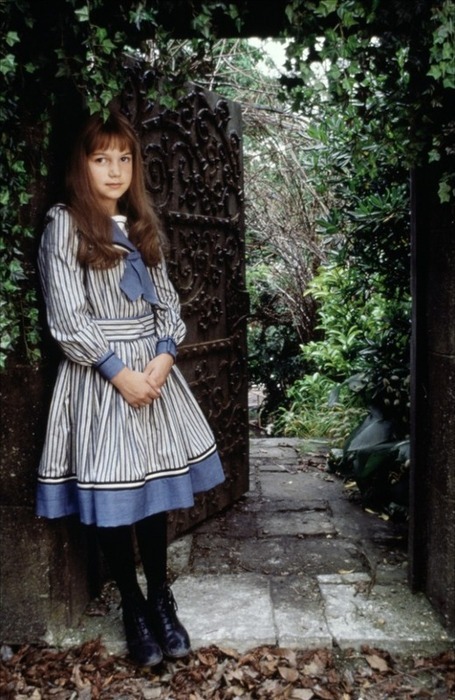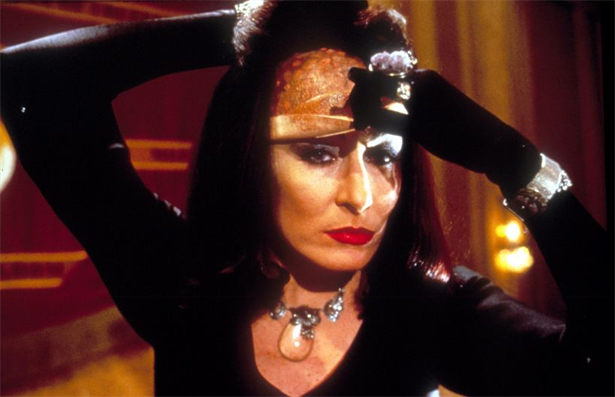This week, I’ll be taking a page from Das Film
Junkie’s playbook and discussing three exceedingly dark children’s movies.
While there is no denying that for centuries kids have been raised upon the
disturbing content found in gruesome fairytales and violent nursery rhymes, the
children’s films of the 1990’s stand out for their consistent willingness to
not only include, but build entire plots around such taboo topics as animal
abuse, child neglect, and organized crime amongst other topics. Nearly two
decades later, these films still remain firmly and frighteningly ingrained in
my memory and continue to serve as reminders of just how alternative an era the
1990’s truly was.
1. ROVER
DANGERFIELD: At first glance, this obscure animated film from 1991 seems like a
harmless if awkward effort to market stand-up comedian Rodney Dangerfield to
children. Upon closer observation, however, the film reveals itself to be a
gritty take on animated kids’ films. The movie contains the requisite talking
animals, musical numbers, and saintly love interest as other animated films, but
instead of telling a heartwarming tale, the film uses its innocuous appearance
to lure children in to an introduction to the horrors of animal abuse. The film
starts with street-smart mutt Rover living the high life with his showgirl
owner, Connie, in Las Vegas. Conflict enters, however, when the film introduces
Connie’s sleazy boyfriend, Rocky, who besides looking like he’s in the throes
of withdrawal and has forgotten the meaning of the word 'shower', despises Rover.
When Connie goes on an extended trip, she leaves Rover in Rocky’s care as Rocky
goes about attempting to make it big in organized crime. After Rover
accidentally interrupts one of Rocky’s shady deals, he retaliates against the
dog by putting him into a sack and throwing the sack over the Hoover Dam. Fortunately,
Rover survives the blatant murder attempt and is taken in by a farm family on
the condition that he will be sent to a shelter at the first sign of trouble.
While it seems reasonable that the family would consider the option of putting
the dog into a shelter in hopes of finding a family that will be a better
match, stern patriarch Cal specifically says that the shelter will be used as a
way to ensure that Rover is ‘put down’ if he starts trouble. Rover surprisingly
stays on at the farm despite the knowledge that each day he stays there could
be his last and eventually begins to adjust to farm life with the help of the
lovely collie next door, Daisy. Animal cruelty rears its ugly head once again,
however, when a pack of wolves attack and (in a particularly graphic scene)
kill the family’s Christmas turkey and run away just in time for Rover to be
blamed. Rather than build a better fence, take Rover to obedience school, or
accept the fact that sometimes dogs get hungry too, Cal decides to skip the
shelter and make Rover pay for his crime by taking the dog into the woods to
shoot him. Luckily for Rover, the wolves attack once again, but this time he is
able to fight them off and save Cal’s life, becoming a local hero in the
process. After finally returning home to Connie in Las Vegas, Rover helps
arrange Rocky’s much deserved demise, but then makes the bizarre choice of
disposing of one abuser only to beg Connie to be reunited with his other abusers
at the farm. While animal abuse is a heinous subject that children should be
taught to stand up against, the film undermines its own lesson by rightfully punishing
one abuser as a villain while inexplicably hailing another as a paragon of respectability.
For graphic violence and concerning mixed messages Rover Dangerfield is a startling example of just how dark 90’s
comedies could be.
 |
| Proving that dogs can be better than many a boyfriend |
2. THE
SECRET GARDEN: Based upon the beloved novel, 1993’s The Secret Garden is commendable for its faithfulness to its source
material. The script is in fact so faithful that it even includes the racism
and child neglect of the original novel. The film begins with angst ridden Mary
Lennox discussing her upbringing in colonial India with flashbacks to her being attended to by a series of Indian
servants whom she refuses to so much as acknowledge. She also laments the ways
in which her parents put their own needs first and ignored her throughout her
childhood until they were tragically killed in an earthquake. Despite Mary’s
complaints, however, her parents seem merely preoccupied and their
self-absorption seems hardly deserving of her blind hatred and fails to explain
her strange pride at her inability to cry after their deaths. Mary soon faces a
much more real instance of neglect when she is taken in by her uncle, the
morbidly depressed Lord Craven, who has spent the last ten years avoiding his
estate and the memories of his deceased wife that it inspires. After being
largely ignored at the estate by her absent uncle and the household staff, Mary
makes an acquaintance with her maid, Martha, whom she insists upon treating as
subhuman despite Martha’s sincere efforts to make her feel at home. As if Mary’s
elitism isn’t difficult enough for a modern audience to stomach, she later
reveals herself to be racist when she slaps Martha across the face and throws a
hysterical tantrum when Martha mentions her surprise at Mary’s being white and
British despite her Indian origins. Given the time period in which it is set, the
conversation is within historical context, but the film fails to use this
moment as a lesson by allowing Mary’s prejudices to go unchallenged. As a
result, the film implies that her racist beliefs are not just commonplace for their
time, but in fact acceptable and correct. Following her outburst, Mary stumbles
upon her invalid cousin who is even more sullen and neglected than she is. Colin,
she discovers, has been hidden in a back room in the house with a mysterious
illness and has never so much as seen the light of day in all of his ten years.
While the logical choice would be to have the boy treated for his condition and
provide him with loving care, Lord Craven finds his son’s paralysis too painful
a reminder of his losses and leaves the boy’s care entirely to the staff,
refusing to so much as visit him. The staff do little to alleviate Colin’s ills
by constantly reminding him that he has a supposedly terminal illness and leaving him
alone all day to ponder his own mortality. Finally, the hardened hearts of the
Craven family are softened when Colin miraculously learns to walk just in time
for his father to learn to bear the sight of him and for Mary to learn that
life tends to be better when you focus on more than the ways in which you’ve
been slighted. With the magic of flowers standing in for much needed
psycho-therapy, The Secret Garden is
a film that can bring out the misanthrope and elitist in us all.
 |
| Mary Lennox: Rocking adolescent angst before it had a name |
3. THE
WITCHES: Perhaps the most blatantly dark film on this list is the 1990
adaptation of the Roald Dahl classic The
Witches. Like The Secret Garden, The
Witches is extremely faithful to its source novel and maintains all of the
sinister chills of the original. The story begins with Luke listening to his
grandmother’s tales of witches in her native land, including a particularly
haunting story of how her neighbor was imprisoned in a portrait by a witch,
leaving her family to assume she had disappeared. Tragedy strikes when Luke’s
parents are killed in a car accident, but his kindly grandmother takes him in
and provides him with a loving home. The plot thickens, however, when Luke
encounters several real life witches who are every bit as malicious and vile as
his grandmother told him. The film does maintain a solid moral standpoint by
showing the witches as evil and also reminds children that people can learn
from their mistakes and change when one witch redeems herself with a good deed
in the film’s final scene. It also provides kids with useful lessons in ‘stranger
danger’ by having several of the witches behave strikingly similar to
kidnappers when they attempt to lure children with candy and false promises. Despite
its consistent messages, however, the film contains plenty of darkness in just
how evil it shows its witches to be. The film’s most grotesque moments come
courtesy of scenes in which children are graphically transformed into mice,
witches annihilate one another on a whim, and a pair of witches attempt to roll
a baby carriage over a cliff. Perhaps the most disturbing and realistic
instance in the film is its finale which, despite its happy ending for Luke,
informs viewers that the witches are alive and well and ready to strike at any
time. For a deliciously dark thrill ride that will last well beyond Halloween,
look no further than The Witches.
 |
| Not even the most horrifying scene |

OYG, I can't believe someone else remembers "Rover Dangerfield". I always thought of it as a half-a$$ed version of Don Bluth's "All Dog's Go to Heaven", but now that you point it out....yeah, it is actually a dark story. And How come Nobody ever talks aboot "The Witches" anymore. There wasn't one kid who didnt crap their pants after seeing that movie!
ReplyDeleteYea, I loved Rover as a kid, but now I can't get over how messed up it is! And The Witches still freaks me out, me and Kristine couldn't even sit through it this Halloween
ReplyDelete